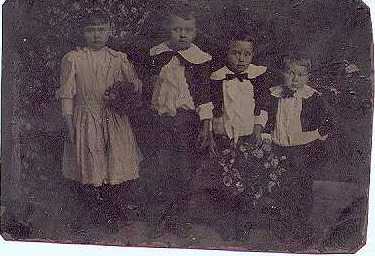Sign up for the Family Tree Newsletter Plus, you’ll receive our 10 Essential Genealogy Research Forms PDF as a special thank you!
Get Your Free Genealogy Forms
"*" indicates required fields

What the Earl saw was a graceful, childish figure in a black velvet suit, with a lace collar, and with love locks waving about the handsome, manly face, whose eyes met his with a look of innocent good fellowship.
—St. Nicholas Magazine, 1885
The story of Little Lord Fauntleroy describes a young American boy who becomes a British aristocrat through inheritance. In Frances Hodgson Burnett’s first installment of “Little Lord Fauntleroy” and later in the book of the same name, she started a fashion trend that tormented young boys for more than a decade. She based the clothing for her character on the costume she chose for her sons, especially Vivian Burnett. Mrs. Burnett was well known in Washington, DC, for the unusual way she dressed her boys.
American mothers seeking status in their community latched onto this craze as a visual representation of the family’s economic and social standing. Boys subjected to the style began wearing the look as toddlers until they were pre-teens, but in some families boys wore them until they were in their early teens. This particular style lasted from 1886 until early in the 20th century.
Boys wearing this style appear in most family albums just like the tintype Ceil Romeo submitted of members of the Husser Family from Husser, La. The three boys in this image are actually dressed in a conservative version of the Lord Faunterloy look. The full outfit that appeared in the book’s drawings by Reginald Birch was quite elaborate. While boys wore velvet suits prior to the publication of the book, the Fauntleroy attire embellished that standard fashion trend. The full Lord Fauntleroy suit called for a white shirt with a full “van dyke” collar, a satin sash, a plumed hat and long curled hair.
In Ceil Romeo’s tintype, the children are outfitted for a special occasion. The presence of the flower wreath held by all three boys and the bouquet carried by the girl suggest participation in a family wedding. Their mother dressed her sons in the Fauntleroy suit with ruffled blouses and black ties. Their hair is cut short rather than worn in long curls. Dating these suits to within a few years is difficult. In the early phases of the craze, boys usually had long hair, frilled blouses and black shoes and stockings. In the 20th century, boys usually wore the suits with white stockings, patent leather shoes and short hair. This image probably dates from the 1890s, but genealogical clues based on the ages of the children will have to confirm it. All the children are only a year or two apart in age.
Their sister is not as elaborately clothed. She is wearing a relatively simple white dress with tight sleeves on the forearm and full upper arm with black stockings and probably black boots. Her clothing is consistent with the 1890s.
Unfortunately, the varnish on the tintype has darkened to the point where not all details are visible. Photographers coated the surface of the iron tintype with photographic and then coated it with varnish to protect its surface. As the tintype ages, the varnish has a tendency to darken. The scan of this tintype has been scanned and corrected, but it still is rather dark.
The next step is to compare the Husser family history to try to find children born close together and then a family wedding that occurred when they were young. This would provide Ceil with names and a reason for the photograph.
ADVERTISEMENT

